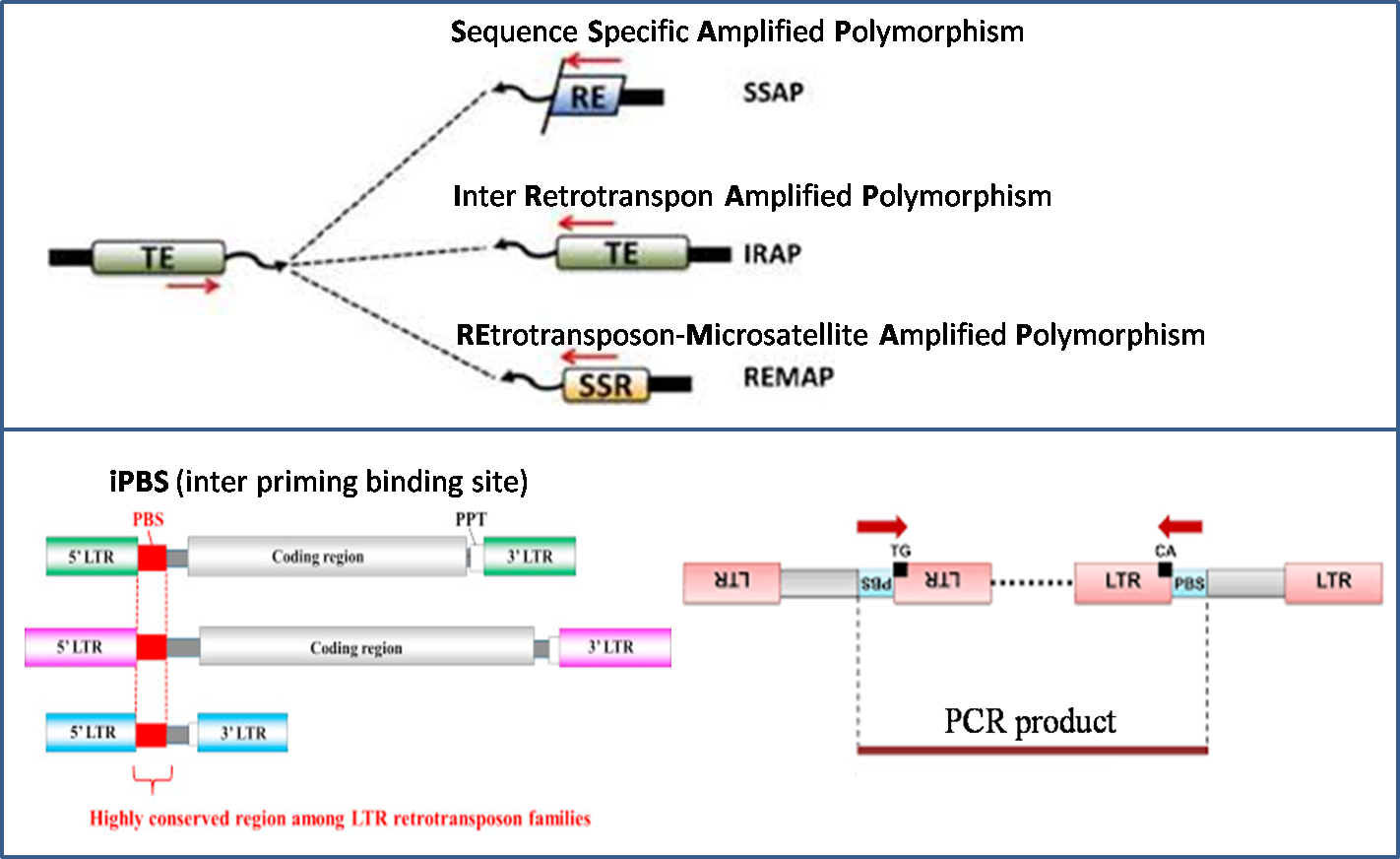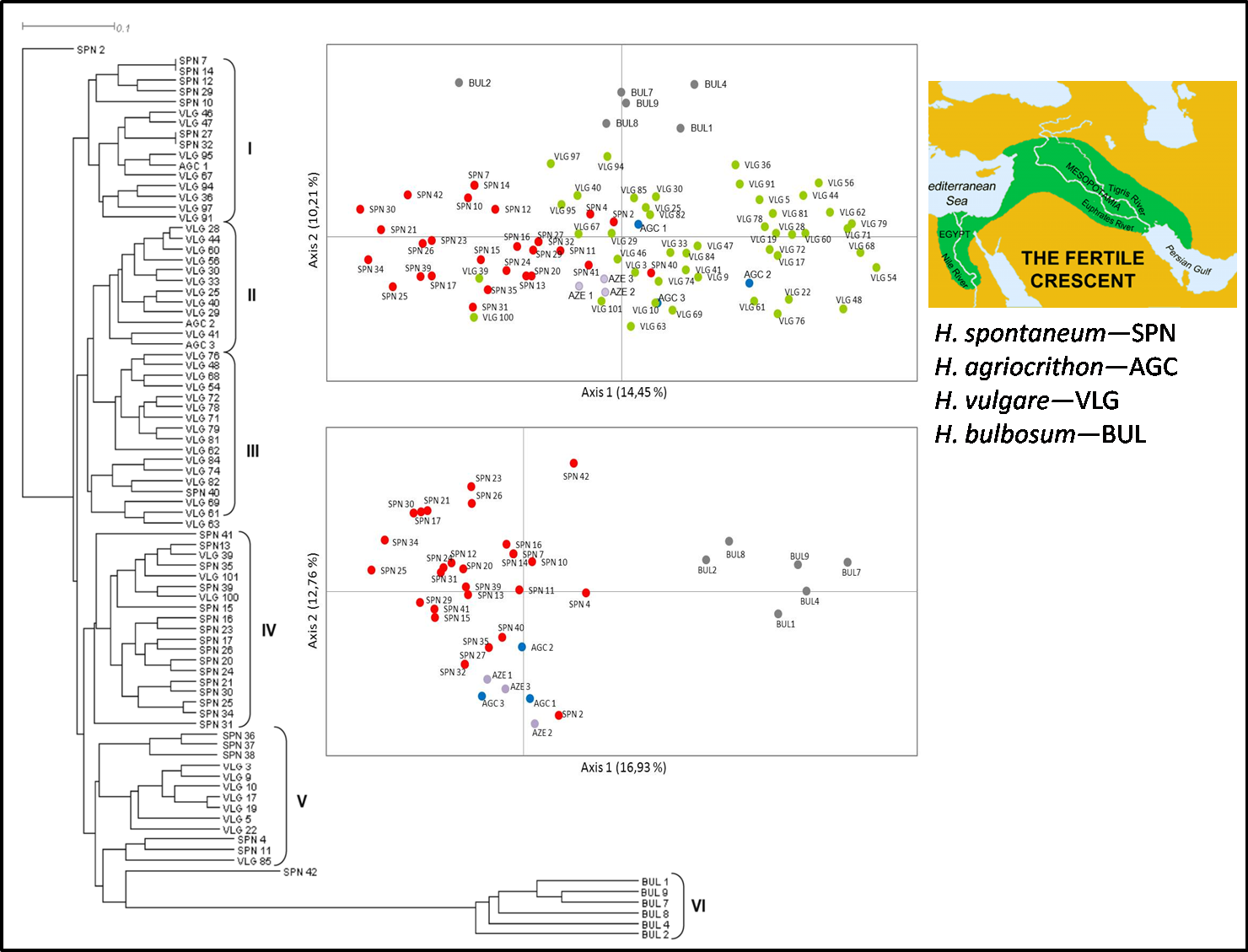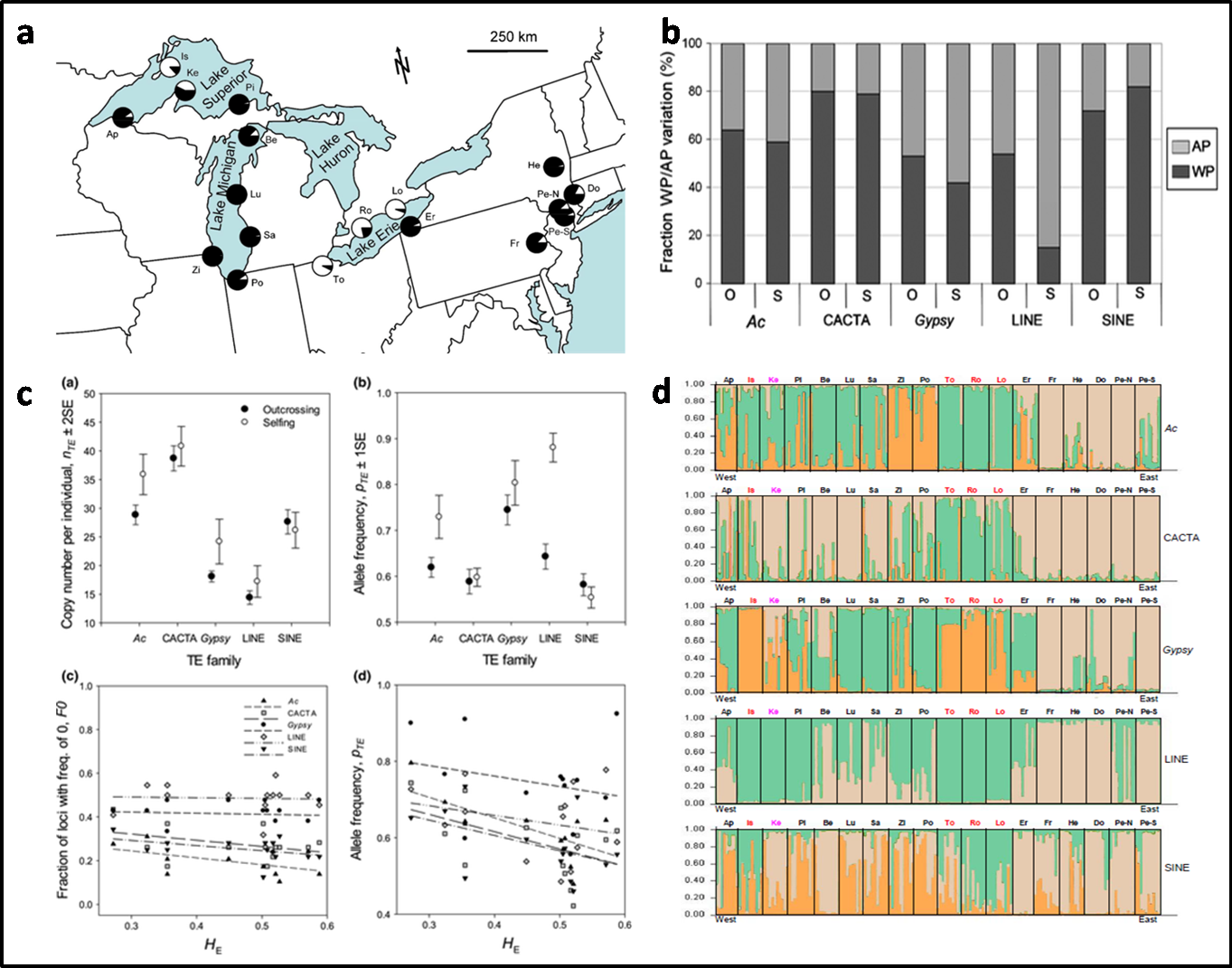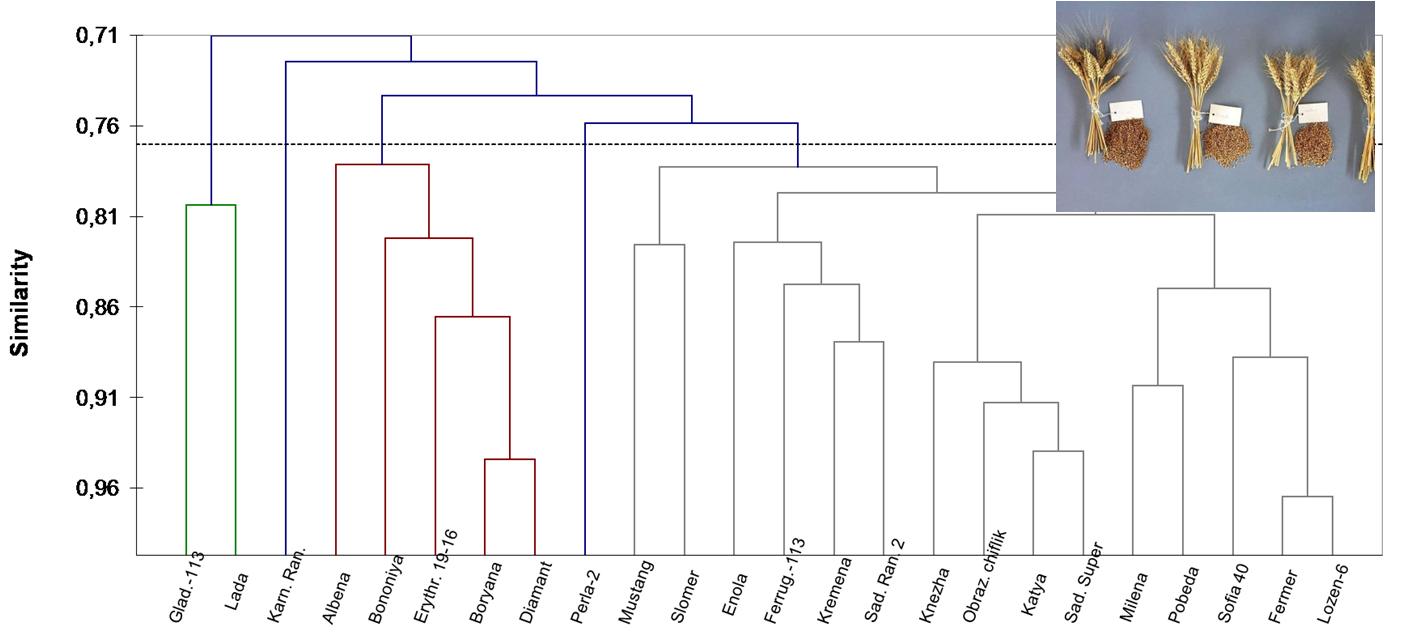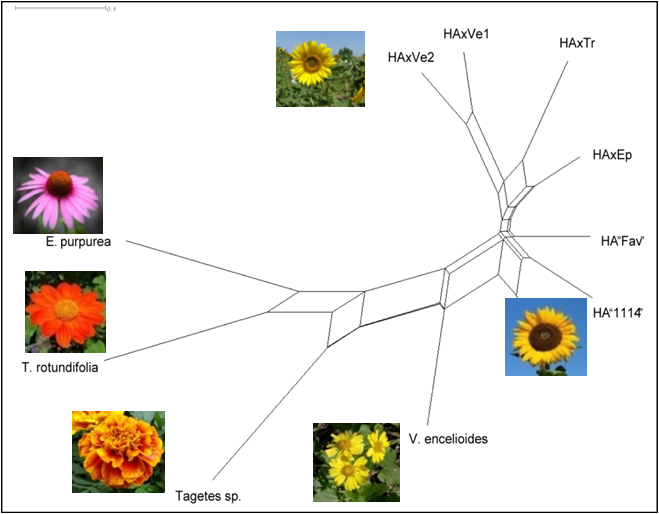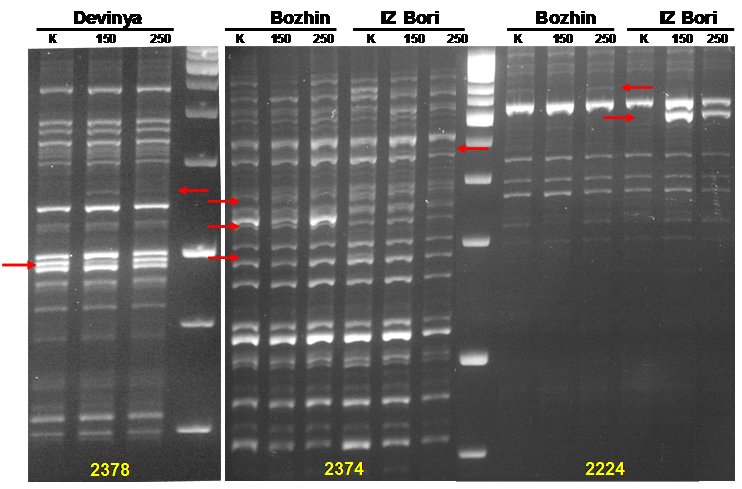“GENOME DYNAMICS AND STABILITY” – Chromosome and DNA markers
The development of high-throughput molecular marker systems for studying various aspects of plant genetic biodiversity is among the priority research directions of the laboratory unit. The focus is on molecular markers based on transposable elements (TEs) as a tool to address ecological and evolutionary thematic issues, to investigate the impact of abiotic stress factors on genome stability as well as for case fingerprinting studies in support to breeding research. The ultimate goal is to get better insight into the mechanisms that generate genetic diversity in the plant kingdom and how TEs contribute to genetic diversification and adaptation.
Transposable elements are DNA fragments having the capacity to move from one place into another in the host genome. TEs are usually present in high copy number and have a wide genome coverage. In addition, TEs are prone to activation and transposition in response to changes in the environment including biotic and abiotic stress factors. These features determine the relevance of TEs for the development of sensitive PCR-based multi-locus profiling techniques (Fig. 1).
Fig. 1. Scheme of retrotransposon-based markers SSAP, IRAP, REMAP and iPBS. In these methods, PCR oligonucleotide primers face outwards from terminal retrotransposon regions (LTR) and amplify genome regions between transposon copies (insertions) and or between transposon copies and adjacent regions such as SSR loci and restriction sites. As retrotransposon integration patterns vary between genotypes, the number and size of the resulting amplicons can be used for differentiation of genotypes, to measure genetic diversity or to reconstruct phylogenies.
1. Ecological and evolutionary studies
Molecular mechanisms of domestication and evolution in cereals
Studies aim at getting better insight into the patterns of genetic divergence within the genera Hordeum (H. spontaneum, H. vulgare and H. agriocrithon) and Triticum (tetraploid wheat T. turgidum (var. turgidum, cartlicum, durum and polonicum) and to comprehensively define the stages of domestication and evolution within these species. The divergence rate of pseudogenes (analogues of structure genes with fully or partially lost functional activity) and transposon-based markers have been used as a marker approach to monitor the genome evolution (Bonchev et al 2017).
Fig. 2. Domestication and evolution of barley assessed by REMAP markers.
Genomic breeding for drought tolerance in wheat
Drought stress poses a major threat to food production worldwide, and its impact is only expected to increase with the further onset of climate change. The complex nature of drought resistance requires a multi-pronged approach to breed new varieties with stable and enhanced yield under drought stress conditions. In this line, we have been participating in an ongoing project (coordinator Department of Genetics, Faculty of Natural Sciences, Comenius University, Bratislava, Slovakia) focused on the application of the relatively new high throughput method Genomic Selection (GS) for fostering wheat breeding for drought tolerance. The goal is to identify loci for quantitative characters for drought tolerance on the basis of large-scale sequencing of the genome of wheat preselected material using approximately 50 000 markers and to select germplasm recources from dihaploid lines to be tested and used as donors for drought tolerance in the breeding practice.
Mating system variation, genetic diversification and TE evolution in Arabidopsis lyrata
The mating system is a key biological factor that influences the genetic diversity in living organisms at both individual and population level affecting parameters such as level of homozygosity, ectopic recombination, genetic drift and ecological distribution. The research studies the interplay between mating system variation, genetic diversification and TE evolution (5 transposon families) in Arabidopsis lyrata populations differing in mating system from predominantly outcrossing to obligate selfing (Bonchev and Willi 2018).
Fig. 3. Mating system variation, genetic diversification and TE evolution in Arabidopsis lyrata North American populations (a); Transposable element (TE) variation within (WP) and among populations (AP) for Arabidopsis lyrata, revealed by AMOVA (b); Transposable element (TE) dynamics under the two mating systems (outcrossing and selfing) for parameters copy number and allele frequncies across a gradient of long‐term population size, reflected by microsatellite gene diversity (c); Genetic cluster assignment of A. lyrata genotypes along the geographical West-East gradient (d).
2. Genetic identification and characterization of plant resources for breeding purposes
The precise identification and characterization of plant germplasm collections is of particular relevance for breeders for improving the breeding process but also to ensure a relevant genetic certification of the used breeding material. Methods of molecular marking offer great opportunities in this aspect especially for solving problematic cases of high varietal and within-varietal diversity at within-species level including the identification of somaclonal variants. Transposon-based markers for genome profiling have been used on a wide range of plant species including wheat,maize, sunflower and its relatives (Fig. 4 and Fig. 5).
Fig. 4. Phylogenetic tree depicting genetic differentiation between wheat cultivars based on iPBS marker.
Fig. 5. Genetic differentiation of representatives of the family Asteraceae (common sunflower Helianthus annuus, Echinacea purpurea, Tagetes sp, Tithonia rotundifolia, Verbesina encelioides) and intergeneric hybrids assessed by iPBS markers.
3. Genome response of plants to abiotic stress
Various retrotransposon-based markers have been routinely used for assessing the impact of abiotic stress factors like osmotic stress (Fig. 6), chemical mutagens and radiation on genome stability in plants as a parameter of their tolerance.
Fig. 6. TE-related genome dynamics in barley varieties (Devinya, Bozhin and IZ Bori) induced by different concentrations of NaCl assessed by different iPBS primers
